There is a treasure trove of photographs in the top-floor flat of a slightly down-at-heel, three-storey house in London’s Notting Hill. Most of the photographs were shot in black and white and there is a lingering wistfulness about many of them, a sort of seductive haunting.
There are pictures of a mountain village in Slovakia showing people and a way of life, long since vanished. They show pilgrims climbing Croagh Patrick in Co Mayo, and others of similar motivation walking through woodlands in Slovakia.
There are pictures of children – in Ireland and in the northeast of England – that also seem like images from a distant age.
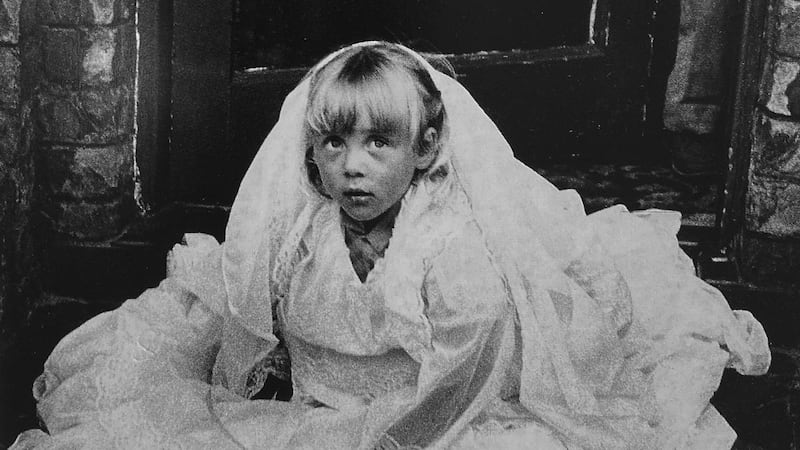
Other photographs show Irish Traveller families, and market fairs for cattle and horse traders. One or two of the images look like they could be snapshots from the world of John Steinbeck’s The Grapes of Wrath.
There are pictures of market traders in London and of street musicians, many of them performing on Portobello Road, including Bob, the blind Irishman who played an accordion and to whom the photographer, Markéta Luskacová, (it is pronounced lus-ka-chovah), dedicated one of her books of pictures.
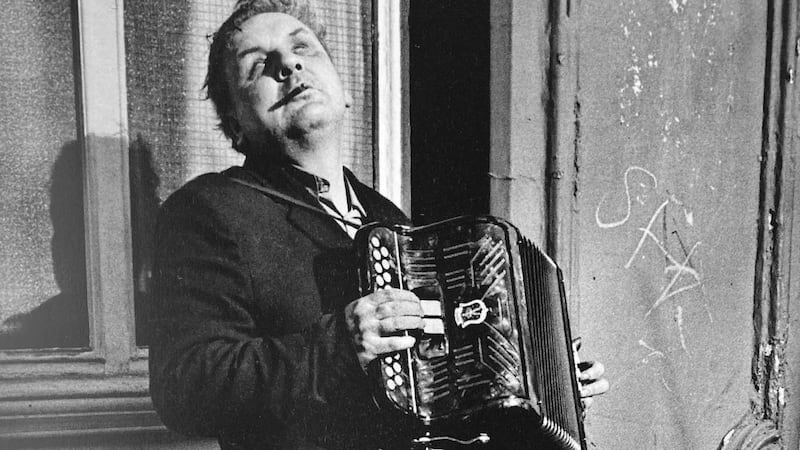
The way to Luskacová’s Notting Hill flat is up 37 steps over three flights of stairs. She opens the door to me. She is 77 years old but has lost little of her youthful beauty, vitality or her elegance.
Her hair is salt and pepper grey and is tied back in a bun. Her face is tanned and she smiles a lot – her eyes, which are clear and a pale bluey grey, smile with her. She is wearing an oriental-style turquoise shirt, buttoned up the front, loose-fitting black pyjama-like trousers and open-toe sandals.
I hand her some flowers from a nearby shop – “Oh, how very Czech,” she says – and smoked salmon from Ireland.
“Irish salmon!” she exclaims. “What a treat.”
She leads me through her narrow, tunnel-like hall, and into her delightfully cluttered but compact kitchen. There is an exercise bicycle sandwiched between the door and an old wooden cupboard, the glass doors of which are smothered in family photographs and other visual mementoes. They include a January 2009 commemoration of the death of Jan Palach, the Czech student who set himself on fire in Wenceslas Square on January 16th, 1969, in protest at the Soviet/Warsaw Pact invasion of 1968 that crushed liberal reformers then in charge of the ruling Czech Communist Party.
Old loyalties burn strong in Luskacová. She goes through the images displayed, here is my son, she says, that’s his father, and this is Jan Palach.
“All kind of things which I want to see,” she says of the collection.
I sit at the small kitchen table as she serves coffee and delicious home-made sticky pecan biscuits (just egg white, brown sugan and vanilla, she tells me) and prepares carrot and ginger soup.
Luskacová is one of the pre-eminent European photographers of her generation. She has exhibited in numerous countries in Europe, North America and Australia, published several books, and seen her work bought by private collectors and for public exhibition. The National Gallery of Ireland recently acquired some of her work and has included examples in the current Picturing People exhibition, running until December 5th.
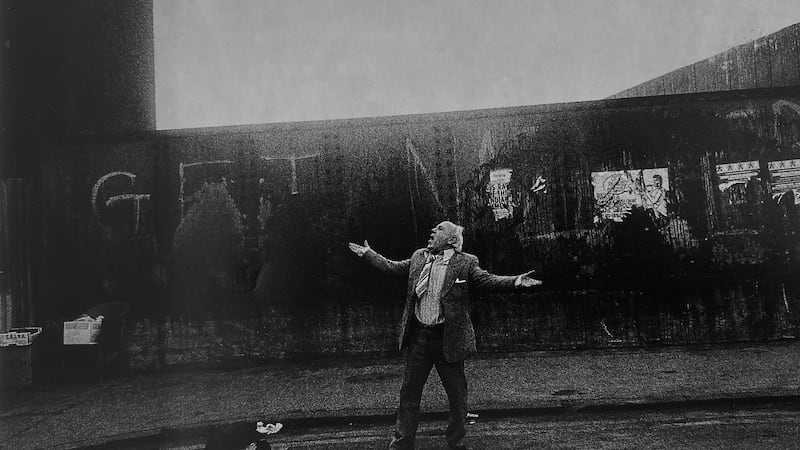
She was born in Prague in 1944 and raised near the city. Her antecedents came from Bohemia, Moravia and Slovakia. “So I am a mongrel,” she says with a mixture of pride and defiance.
She was 3½ years old when the Communist Party took power in 1948 in what was then Czechoslovakia. Her family was middle class and her father, a chemist working in a sugar beet factory, found the general system of advancement, that favoured the working class over ability, difficult to stomach.
“The idea [of communism] is wonderful but the practice is terrible,” she says.
Luskacová was an only child. Her mother, who contracted pneumonia when young, had a weak heart and could not risk having more children. Luskacová, when she came home from school, had to look after her because she tired easily and prepare dinner for her father when he came home from work.
Her grandfather, the illustrator Miloš Klicman, was a major influence on her, helping her develop her visual literacy, an inclination that saw her veer away from sociology, in which she obtained a degree from Charles University, and into a career in photography.
She was 19 and on holiday from college when she happened across a group of pilgrims in Slovakia and, returning the following year, took a series of memorable pictures of them. It was a devotion to her subject that lasted seven years.
One of the resultant pictures, showing a man lying on the ground in woods near Levoca, in eastern Slovakia, sleeping with his head resting on his hand, is now part of the National Gallery collection.
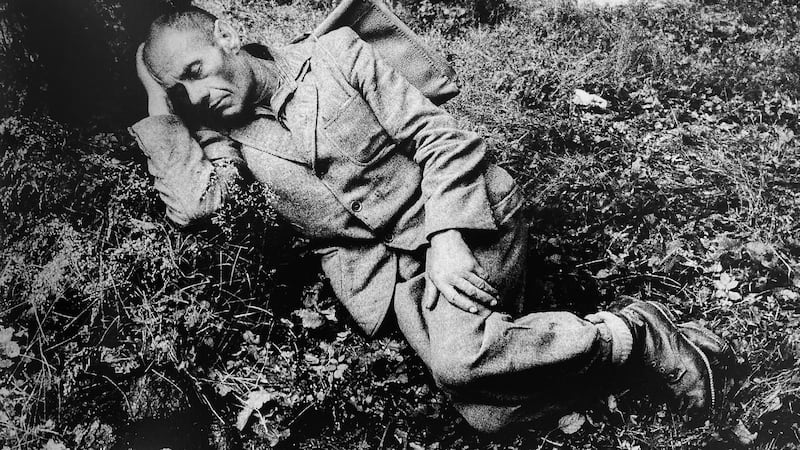
In 1968 (the year the Soviet-engineered invasion), being a pilgrim was an act of defiance against communism. In a country that banned jazz because it was American, and dismissed as “bourgeois” whatever it did not like (including some sciences), to act out one’s religious faith was to be a rebel.
Seeing pilgrims singing while walking through the Slovak countryside was a moment of epiphany for her.
“I thought it was somehow important to make it known,” she says. “You did not think this had a future but it might be important to record it. Once you do a photograph of something, you have evidence that it existed.”
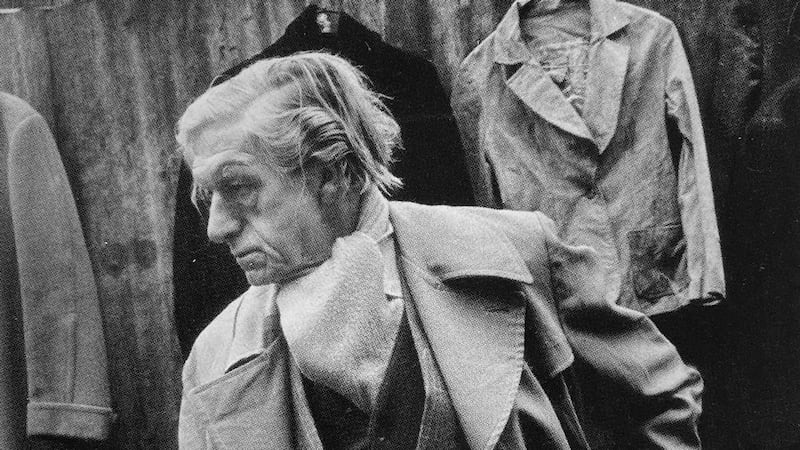
Around the same time, she saw a documentary film Zeme svatého Patrika (The Country of St Patrick) made by the Czech film-maker Jan Spata. To a soundtrack of ethereal music and citing Yates’ The Stolen Child, it portrayed the annual devotions to the saint on Croagh Patrick.
“It was a beautiful film and ever since I saw it, I wanted to see the mountain for myself,” she says.
And so, in 1972, she hitched across Britain and from Dublin to Westport, sleeping rough as she went, travelling without a visa, her progress indulged by kindly immigration officials and gardaí. On the Mayo mountain, she recorded Irish pilgrims and stayed a while.
“I slept there in a tent,” she remembers. “There was a man doing a 40 days’ fast and some people were looking after him and they invited me to stay.”
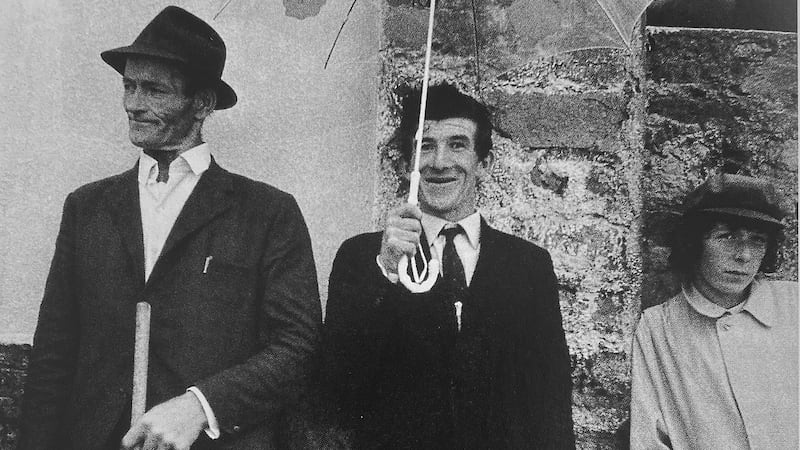
In due course, she moved to Britain permanently and in 1977, with her partner, the late fellow photographer Chris Killip, gave birth to a son, Matthew, now a Los Angeles based film-maker.
She returned to Ireland several times over the years, expanding her photography subjects to include horse and cattle fairs, street musicians (among them a fiddle player in the west of Ireland – “the first street musician I had ever seen because in communist times in Prague, it wasn’t allowed”) – newspaper sellers in Dublin and Travellers.
Viewed from the world of 2021, many of her subjects (always people) appear poor, or at least materially disadvantaged. But not everyone sees her subjects that way. “People here [that is, in Britain and Ireland] say how poor the people look but in Prague, people said how beautiful they look . . . I was not interested in poverty but I was interested in the strength of faces.”
There is, she says, “so much in a face!”
And you can see that in so much of her other work, especially in the London street musicians, photographed in Brick Lane, Cheshire Street, Bishopsgate, Bethnal Green and Portobello Road. They include Bob, a blind Irish accordionist who became a friend and shares a dedication in her 2016 book, To Remember – London Street Musicians 1975-1990.
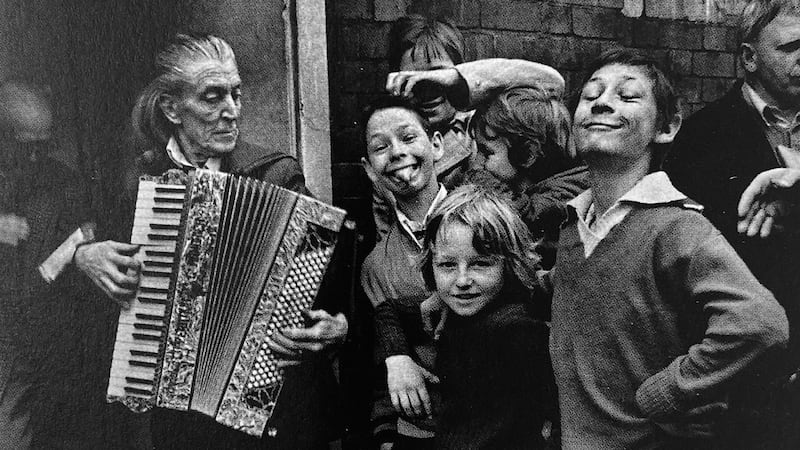
Come on, she says, follow me. And up we go out of the kitchen, ascending more narrow stairs into an attic room. It contains her grandmother’s bureau, two wardrobes and several bookshelves.
Laid out for me to inspect are two fat portfolios, containing close to 100 black and white images, each capturing a person or a moment in the life of Šumiac, a small village in the mountains of central Slovakia she first visited when she was 24 and was captivated by it.
“Every time I earned some money, I went back,” she says.
The photos, like all her work, are seductive, drawing the viewer in slowly but inexorably. Faces are often expressionless, and all the more interesting for it. The subjects are sometimes shown working, or more often waiting, maybe at a funeral or during a midnight Mass.
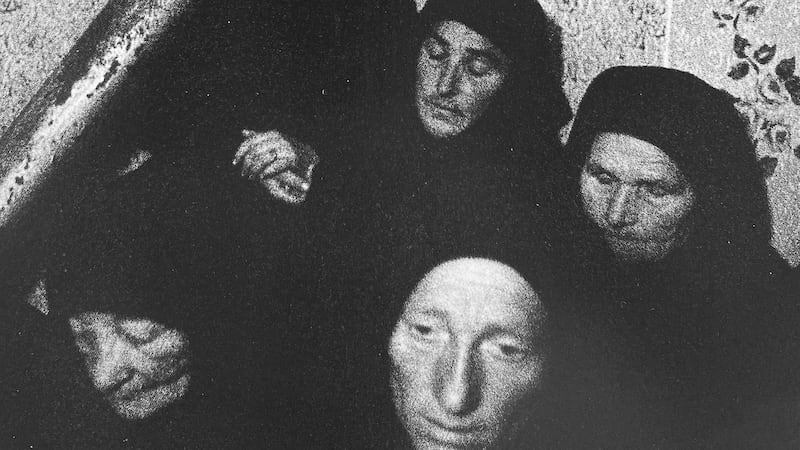
The people are peasants, eking out an existence and living modestly. The way of life shown is one that up to that time probably had not changed much in hundreds of years.
“In every house, they knew how to weave,” says Luskacová. “Now no one weaves. All the old traditions are gone. I caught it absolutely at the last minute.”
Her camera of preference is a Leica – and no long lens! she insists. Why black and white, I ask her (though she has done some colour work, notably a collection On Death and Horses and Other People, a record of the carnival in Roztoky, a small Czech town, from 1999 to 2010).
“You say it more clearly with black and white,” she replies.
The carrot and ginger soup, eaten with her grandmother’s hand beaten, pointy handled Bohemian metal spoons is followed by roasted salmon with pumpkin puree and roasted tomatoes.
Luskacová has been living in her small Notting Hill flat for 43 years and is now rushing to collate all her photographs for what she hopes will be four, maybe five, books before she runs out of time. An exhibition is planned for the Bristol Photo Festival in 2023, followed she hopes by another in Dublin the year after.
“The only way is to keep going until you drop dead. I don’t prey for immortality but just to get the books done,” she says.
She thinks there’s a book in Šumiac, another in the pilgrims of Slovakia, a third might concentrate on east London, a fourth on children and juvenile marching bands in the northeast of England. A fifth might be on . . .
“A book isn’t only a compilation of pictures. It has to have a structure and then you have to find a publisher,” she says. “Photography is a tool for remembering and you generally only remember a good picture. If it is well composed, you will remember it and so the intention behind my photography is to remember.
“I photograph something because I like it. If you take a photo of someone in a street and they ask you why and you say because I like you. Well, that is a good answer.”
As I leave, squeezing back down the narrow hall, there’s a slot for an umbrella beside a bookcase. Rummaging there not long ago, Luskacová found a sheaf of Irish negatives.
“Stuck inside an umbrella – don’t laugh – from 1973,” she says. “All my life, I was taking the pictures but not always printing them. This is something that haunts me.”
The fifth book?













